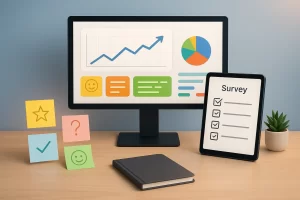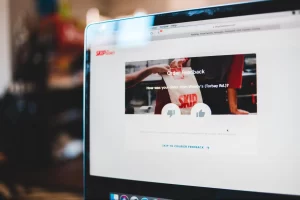Managing Business Finances: 18 Expert Tips for Entrepreneurs
Effective financial management is crucial for entrepreneurial success, and this article brings together expert advice to help you master it. Drawing from the wisdom of seasoned professionals, these insights offer practical strategies for entrepreneurs to optimize their business finances. From cash flow forecasting to strategic expense management, these tips provide a solid foundation for financial stability and growth in your business venture.
- Redirect Living Expenses to Business Deductions
- Plan for Slower Revenue Growth
- Treat Cash Flow as Decision-Making Tool
- Build Financial Infrastructure in Advance
- Establish Regular Financial Check-Ins
- Implement Rolling Cash Flow Forecast
- Divide Income into Separate Accounts
- Maintain Discipline in Financial Management
- Align Billing with Delivered Services
- Keep Business and Personal Finances Separate
- Prioritize Steady Growth over Excitement
- Create Weekly Cash Flow Forecast
- Build Strategic Cash Reserve Buffer
- Focus on Immediate Income-Producing Assets
- Justify Every Expense Monthly
- Maintain Three-Month Operating Cash Buffer
- Schedule Weekly Financial Review Meetings
- Know Your Numbers Inside Out
Redirect Living Expenses to Business Deductions
After 19 years of running my accounting practice, the most valuable lesson I’ve learned is that most entrepreneurs are unknowingly operating in the wrong tax system. There are literally two different tax systems in America – one for W-2 employees and one for business owners – and most people don’t understand how to legally shift their living expenses into business deductions.
My practical tip: Start a legitimate home-based business and redirect your current living expenses into tax-deductible business expenses. I personally write off my meals, mileage, cell phone, internet, and a portion of my house because I operate from home with three full-time employees. What you’re already spending on living expenses can become business deductions.
The average household with a home-based business saves between $4,000 and $8,000 annually in taxes. I recently helped Dr. Kenneth Meisten go from owing $3,300 in taxes to receiving an $18,000 refund by going back three years and finding overlooked deductions his previous accountants missed. Another client had $244,000 worth of expenses their accountant completely overlooked.
The key is having proper documentation and understanding which personal expenses can legally become business expenses. Most people are leaving thousands on the table because they don’t know these laws exist or how to implement them correctly.
 Courtney Epps
Courtney Epps
Owner, OTB Tax
Plan for Slower Revenue Growth
After consulting on hundreds of business plans, the most valuable lesson I’ve learned is that entrepreneurs consistently underestimate how long it takes to generate revenue. I’ve seen countless startups run out of cash not because their business model was flawed, but because they assumed they’d be generating meaningful revenue by month 6 when it actually took 18 months.
My practical tip: Build two completely separate financial models – one for if you get investor funding, and one for bootstrapping alone. Most entrepreneurs make the fatal mistake of betting everything on securing outside financing. When investors say no (or take forever to say yes), they’re left scrambling with no Plan B.
I worked with a SaaS startup that projected $50K monthly revenue by month 8. When they hit month 12 with only $8K monthly revenue, they nearly folded. The founder had to pivot to a consulting model to keep the lights on while the product gained traction. Having that bootstrap scenario mapped out from day one would have saved them months of panic and scrambling.
The entrepreneurs who survive aren’t necessarily the ones with the best products – they’re the ones who plan for revenue to take 3x longer than expected and have multiple paths to profitability mapped out before they need them.
 Charles Kickham
Charles Kickham
Managing Director, Cayenne Consulting
Treat Cash Flow as Decision-Making Tool
What I learned is that cash flow is not just an accounting metric but the lifeblood of decision-making. Early in my career, I thought profitability on paper meant security, but I learned the hard way that you can be profitable and still run out of cash.
One practical tip I share with entrepreneurs is to treat your cash flow forecast like a real-time control panel rather than a static report. You need to know not just how much money you have today but where it is going to be in 30, 60, or 90 days, and what assumptions that projection depends on.
For example, in one of my companies, we avoided a near disaster by rigorously modeling how late payments from a major client would ripple through our payroll and vendor commitments. That awareness let us negotiate better terms in advance and maintain stability. Financial stability is not about avoiding risk entirely but about seeing it early enough to act.
One has to remember that the more disciplined and forward-looking you are with cash flow, the more freedom you have to make strategic moves instead of scrambling to survive.
 Jeff Mains
Jeff Mains
Founder and CEO, Champion Leadership Group
Build Financial Infrastructure in Advance
The biggest financial lesson I learned was during my first company incorporation. We initially set up as a Massachusetts S-Corp because our lawyer wasn’t startup-experienced. Within months, we had to completely shut down that entity and reincorporate as a Delaware C-Corp when we tried to raise our first SAFE note. It cost us $15K and weeks of lost time.
Now I apply the “six-month systems rule” – build the financial infrastructure you’ll need six months ahead, not what you need today. When we reincorporated, I immediately hired a PEO for payroll instead of trying to handle tax filings myself. It was the best $200/month I’ve ever spent.
The practical tip that’s saved us the most money: validate every major financial decision with someone who’s done it before, even if you think you can figure it out. I thought I could handle employment law and tax filings – the U.S. Tax Code is 6,800+ pages long. My stubborn “I can do this myself” attitude in our first few months probably cost us $25K in inefficiencies and mistakes.
At GrowthFactor, we’ve opened up $1.6M in cash flow for customers just this year by helping them make faster real estate decisions. The pattern is identical – companies that invest in proper systems upfront instead of trying to bootstrap everything manually always outperform those that don’t.
 Clyde Christian Anderson
Clyde Christian Anderson
CEO & Founder, GrowthFactor
Establish Regular Financial Check-Ins
The most valuable lesson I’ve learned about managing business finances is this: stability doesn’t come from spreadsheets, it comes from visibility and clarity. Too often, business owners make decisions based on gut feeling, their bank balance, or financial statements they only look at once a year.
The most practical tip I can offer? Build a consistent approach to financial visibility.
You don’t need a complex dashboard, just a regular check-in that gives you confidence in your numbers. Take an hour each month to:
– Review what came in and what went out
– Spot any creeping costs or gaps in cash
– Look ahead to what’s on the horizon
– And ask: “Do these numbers help me make better decisions?”
If the answer is no, the problem isn’t the numbers themselves. It’s that you’re not looking at the right ones in the right way.
At Hawkhurst Accounting, this is the foundation we help businesses build: straightforward, structured finance that cuts through the noise. When you have real visibility, you stop guessing, start planning, and get your time and headspace back.
The real risk isn’t just ignoring the numbers. It’s tracking the wrong ones or misunderstanding what they’re really telling you.
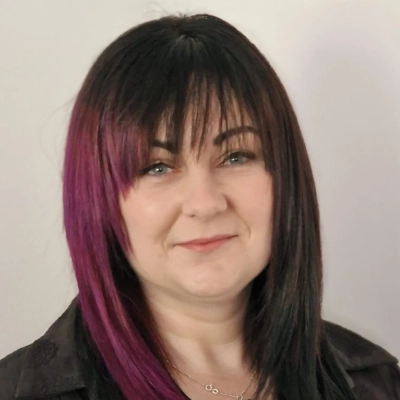 Gemma Hogan
Gemma Hogan
Fractional Fd, Hawkhurst Accounting Limited
Implement Rolling Cash Flow Forecast
The most valuable lesson I’ve learned about managing finances is the absolute necessity of proactive cash flow management. It’s not enough to just track profits; you need to know exactly where your cash is at all times, and where it’s projected to be. We’ve all heard the saying, “cash is king,” and in business, it truly is the lifeblood. You can be profitable on paper, but if you don’t have enough liquid cash to cover your immediate expenses – payroll, inventory, unexpected repairs – you’re in deep trouble. I learned early on that relying solely on end-of-month statements or annual reviews just doesn’t cut it. You need real-time visibility and a forward-looking perspective.
A practical tip I’d give to other entrepreneurs for maintaining financial stability is to implement a rolling 13-week cash flow forecast. This isn’t just a budget; it’s a dynamic tool. Every week, update your actual cash inflows and outflows for the past week, and then project them out for the next 12 weeks. This allows you to spot potential cash shortfalls well in advance – months out, rather than days or weeks. Seeing those dips coming gives you time to react, whether that means adjusting payment terms with clients, negotiating with suppliers, or securing a line of credit before you desperately need it. It provides clarity and empowers you to make timely, informed decisions, rather than being constantly surprised by financial pressures.
 Phil Oliver
Phil Oliver
Owner, Air Treatment Heating & Cooling
Divide Income into Separate Accounts
The biggest lesson I learned? The timing of cash inflows is more important than just showing profit on paper. I used to get excited about a profitable month, but I didn’t pay attention to when invoices would be paid and when vendor bills were due. I almost ran out of money because of that. Now, I build a cash flow forecast for the next 12 weeks and update it every Friday to anticipate potential problems.
Here’s a tip that works: divide your business bank account into three: one for operations, one for taxes, and one for savings. Every time you receive payment, automatically allocate a percentage into each (such as 70/20/10). This way, you’re never struggling to pay taxes or cover unexpected costs. It forces you to stick to a plan, which is particularly beneficial when money is tight, and it gives you the space to make good decisions instead of panicking.
 Preston Guyton
Preston Guyton
Founder, ez Home Search
Maintain Discipline in Financial Management
The most valuable lesson I’ve learned about managing business finances? Don’t spend money as if the job is done. That’s where most small tradesmen go wrong. They finish a big contract, see a chunk of cash in the account, and start throwing it around like they’ve made it. New ute, fancy gear, maybe even a holiday. Next thing you know, BAS is due, insurance hits, or a client delays payment—and you’re scrambling.
In this trade, cash flow is king. You can be booked out for weeks, but if the money isn’t moving, you’re dead in the water.
Here’s one practical tip that’s kept LightSpeed Electrical stable: every single dollar that comes in gets split immediately. I’ve got three accounts—operations, tax, and buffer. No exceptions. Even on slow weeks, I stick to the same rule. That buffer account? It’s saved my arse more than once. Emergency part replacements, gear theft, bad weather delays—we’ve covered it all without borrowing a cent.
And don’t rely on memory. I track everything. Materials, tolls, fuel, even the coffee runs. Because when things get tight, it’s the small leaks that sink the ship.
Also—never let pride stop you from renegotiating terms or chasing late payments. You’re not being rude. You’re keeping your business alive.
This game isn’t just about volts and amps. It’s about discipline. Stay lean, stay alert, and treat your finances like your switchboard—if it’s not wired properly, things can blow up fast.
 Alex Schepis
Alex Schepis
Electrician / CEO, Lightspeed Electrical
Align Billing with Delivered Services
When EasyPR had several high-budget blockchain clients simultaneously, our revenue looked good on paper, but payment cycles were telling us a different story. Within a few weeks, clients confirmed campaigns totaling over $150,000, but very few of them adhered to the net-60 terms as our costs within the business demanded immediate payments. That mismatch was an indicator of how off the projections might be without being aligned with the reality of operations.
I also changed the billing system, whereby it is no longer pegged to the payment due date but to what has been actually delivered. As soon as a placement went live, it initiated invoicing with no bargaining. This slight change introduced some form of discipline throughout and a degree of certainty to our finance department without them having to chase payments. Our response time to incoming payments improved by more than 40 percent in one business quarter, and the execution of our campaigns became easier as well since everyone was working on visible milestones. The lesson I learned is that stability is not dependent on the number of clients or campaigns. It lies in the way the two processes of execution and payment are intertwined.
 Suvrangsou Das
Suvrangsou Das
Global PR Strategist & CEO, EasyPR LLC
Keep Business and Personal Finances Separate
The biggest lessons I’ve learned running Proven Plumbing are that you’ve got to keep your business finances organized and separate from your personal life. In the early days, it was tempting to run everything out of one account, but that just led to confusion. Once I set up proper bookkeeping and tracked every dollar going in and out of the business, I finally understood where we were really making money and where we were bleeding it. It made a huge difference in how I planned ahead and priced our services.
If I could give one tip to other entrepreneurs, especially in hands-on service work like plumbing, it’s this: always keep a cash reserve. Things break, equipment wears out, and sometimes clients take longer to pay than expected. That buffer has saved me more than once. It lets me take care of my crew, keep the quality of work high, and most importantly, show up for my customers without scrambling behind the scenes. Financial stability isn’t just about staying in business; it’s about being able to keep your promises when your clients are counting on you.
 Louis Natale
Louis Natale
Owner, Proven Plumbing
Prioritize Steady Growth over Excitement
The biggest lesson I’ve learned about managing business finances is that consistency beats excitement. In luxury real estate, especially here in Boston, it’s easy to get caught up in the momentum of a big sale or a high-profile listing. But real financial health comes from treating every transaction like a stepping stone, not a finish line. I’ve seen how quickly profits can disappear when you don’t plan for delays, unexpected costs, or market shifts, especially in historic neighborhoods like Beacon Hill or during longer development projects on the North Shore.
A few years back, after a successful boutique condo project, I immediately rolled the profits into another build without slowing down to review the long-term numbers. I underestimated holding costs and didn’t account for seasonal construction delays. That experience taught me to always maintain a cash buffer and to build a slow-growth mindset into even the most ambitious plans. I’ve stuck with that ever since.
If I had to give one practical tip, it would be this: Know your numbers better than anyone else. Review your cash flow every week, not just when things feel tight. And don’t confuse being busy with being profitable. I’ve learned to walk away from deals that look good on paper but don’t align with my long-term goals or cash strategy.
Boston’s luxury market moves fast, but the clients who trust me the most are the ones who see that I make steady, well-calculated decisions. That kind of discipline doesn’t just protect your business; it builds a reputation that lasts.
 Yassien Youssef
Yassien Youssef
Real Estate Investment and Development, Compass
Create Weekly Cash Flow Forecast
The most valuable lesson? Profit doesn’t mean cash. Early on, we had jobs that looked great on paper but nearly broke us waiting on payments. Now, we track cash flow just as closely as profit, monitoring when money comes in, not just how much. One practical tip: create a rolling 8-week cash forecast. It doesn’t need fancy software; a spreadsheet works. Know what’s coming in, what’s going out, and what’s at risk. If you can see cash trouble coming, you can fix it before it hits.
 Blake Beesley
Blake Beesley
Operations and Technology Manager, Pacific Plumbing Systems
Build Strategic Cash Reserve Buffer
What’s the most important lesson you’ve learned when it comes to managing business finances, and what’s your best advice to other entrepreneurs for staying solvent?
The key lesson is: build your financial runway before you think you need it, treat your cash not as an afterthought, but as a strategic advantage. For every deal, I construct a “10 percent reserve buffer,” depositing 10 percent of the projected cost of the project into a separate account before any work even begins. This buffer becomes not just a safety net but a launchpad to opportunity.
As a practical tip, automate your reserve building by establishing a separate business account, into which you sweep a predetermined percentage, say, 5 to 10 percent, of each capital infusion or revenue payout. This unconventional method transforms discretionary savings into disciplined capital, so you never have to scramble for money when an unplanned expense arises or a time-sensitive opportunity presents itself.
 Rachael OBella
Rachael OBella
Founder, Gethomecash
Focus on Immediate Income-Producing Assets
The most valuable lesson I’ve learned about managing business finances is this: don’t bank on appreciation, bank on cash flow. Too many investors get into trouble assuming their property will be worth more in 10 or 20 years. I’ve never played that game. I invest in areas where appreciation is minimal, so I focus strictly on return. My money has to make money now, not someday.
My practical tip to other entrepreneurs? Only buy assets that produce income from day one. Whether it’s rent or resale margin, the numbers have to work without gambling on future value. That mindset has kept my finances stable and my business growing.
 Don Wede
Don Wede
CEO, Heartland Funding Inc.
Justify Every Expense Monthly
Know exactly the amount of money you will need to live. This is one of the bitter lessons that I also had to learn as a small boy when optimism was quicker than the raw numbers. And revenue estimates are an estimate, but burn is real. Any and all my hire, infrastructure, and growth experiment decisions run through this simple mental pattern: Will this keep us alive 18+ months without new money?
One simple tip: zero-based budget plan and re-justify every single spending on a monthly basis. Do not roll over last month’s assumptions. Crunch the potentially painful figures on your own until you are confident that your figures could withstand the examination of investors.
Most founders delegate financial transparency too early. The first hire that I made would be a fractional CFO who could not be brought on board until I could prove our financial model without any fluff.
Stability is not made up of hope and hockey-stick decks. It is built on the basis of the knowledge of each dollar in and out and making ruthless tradeoffs to save runway. The hopeful spreadsheet does not exist in the face of bloodthirsty clarity.
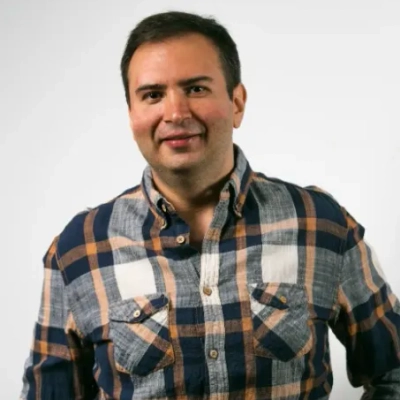 Mircea Dima
Mircea Dima
CTO / Software Engineer, AlgoCademy
Maintain Three-Month Operating Cash Buffer
The most valuable lesson I’ve learned about managing business finances is that profit is not cash flow. And significant cash flow lets you make wiser decisions. Early days for each startup are about profit booking on paper, but vendor payments and payroll always remain a struggle. This has taught me the importance of cash flow management.
The most practical tip I have learned is that every entrepreneur needs to build a buffer of at least 3 months of cash in hand required for operating activities. This is your non-negotiable safety net. Review your financials monthly and do not only focus on income, but also burn rate, margins, forecasts, etc.
 Ansh Arora
Ansh Arora
CEO, Inspiringlads
Schedule Weekly Financial Review Meetings
Know your numbers. That’s the golden rule. You can’t grow, pivot, or protect what you don’t understand. And not just your revenue and balance sheet. You need to know what your cost of goods sold is. If you are in the service industry, how much time do you put into a client file versus what you charge? What are your costs of goods sold?
Practical tip: Don’t just look at your revenue — watch your profit margins, cash flow, and monthly burn rate. Schedule a non-negotiable “money meeting” with yourself every week. It’s not about being a CFO — it’s about being an informed CEO.
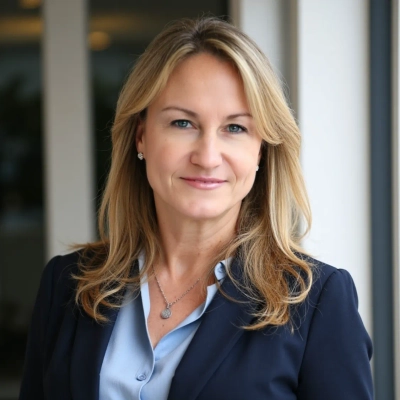 Jacqueline Salcines
Jacqueline Salcines
Founder, Attorney at Law, SALCINESLAW
Know Your Numbers Inside Out
The most valuable lesson I have learned about managing business finances is:
a) Everything costs more than you budget.
b) Accounts receivable take longer to collect than you plan.
c) A revolving line of credit is critical (so secure it before you need it).
d) There is no replacement for having enough cash reserves.
The lesson here is to understand your numbers, be fiscally conservative, and disciplined.
 Daniel Feiman
Daniel Feiman
Managing Director, Build It Backwards








